Plan your road trip together, like playing a broad game.
Roles
/Visual Design
/User Experience
/Product Documentation
Toro is a collaborative road trip planning tool that could help a group quickly decide at the same time. The concept of it is like a broad game. Each player represents one of the animals character and together, they could come across America.
The idea of using the tangible tokens as the user interfaces, as a contrast of a fully immersive digital interfaces for user experiences nowadays, has enhanced the interactiviity of the user experience by connecting tactility and tangibility. The user interaction is communicated with touchable and sensible tokens and provided with the feedback accordingly. In this way, it allows a communiative collaboration that happens at one place and one time. It does trigger the retroperspective of the initial interaction models that care and attend to every details that human engage with physicality. A seemingly step back but is inspiring for the possible collaborative interface design in the future.





The collaborative planning tool, Toro, helps to plan a road trip in a manner that entertains the users like a board game. The mission is for a group of animals to travel together in the United States.

Each character card stands for one player with their coded information. Based on the players’ skilils and restrictions in a road trip, their weight in decision making differs and therefore helps to define the game.

The planner breaks dow the elements that need decision-making with three steps: the location, the time and whenever a point of different opinions is raised. By doing so the road trip is planned with big decsions simplified as small details. A quick, easy and fun road trip plan could be generated by playing a board-game like experience.
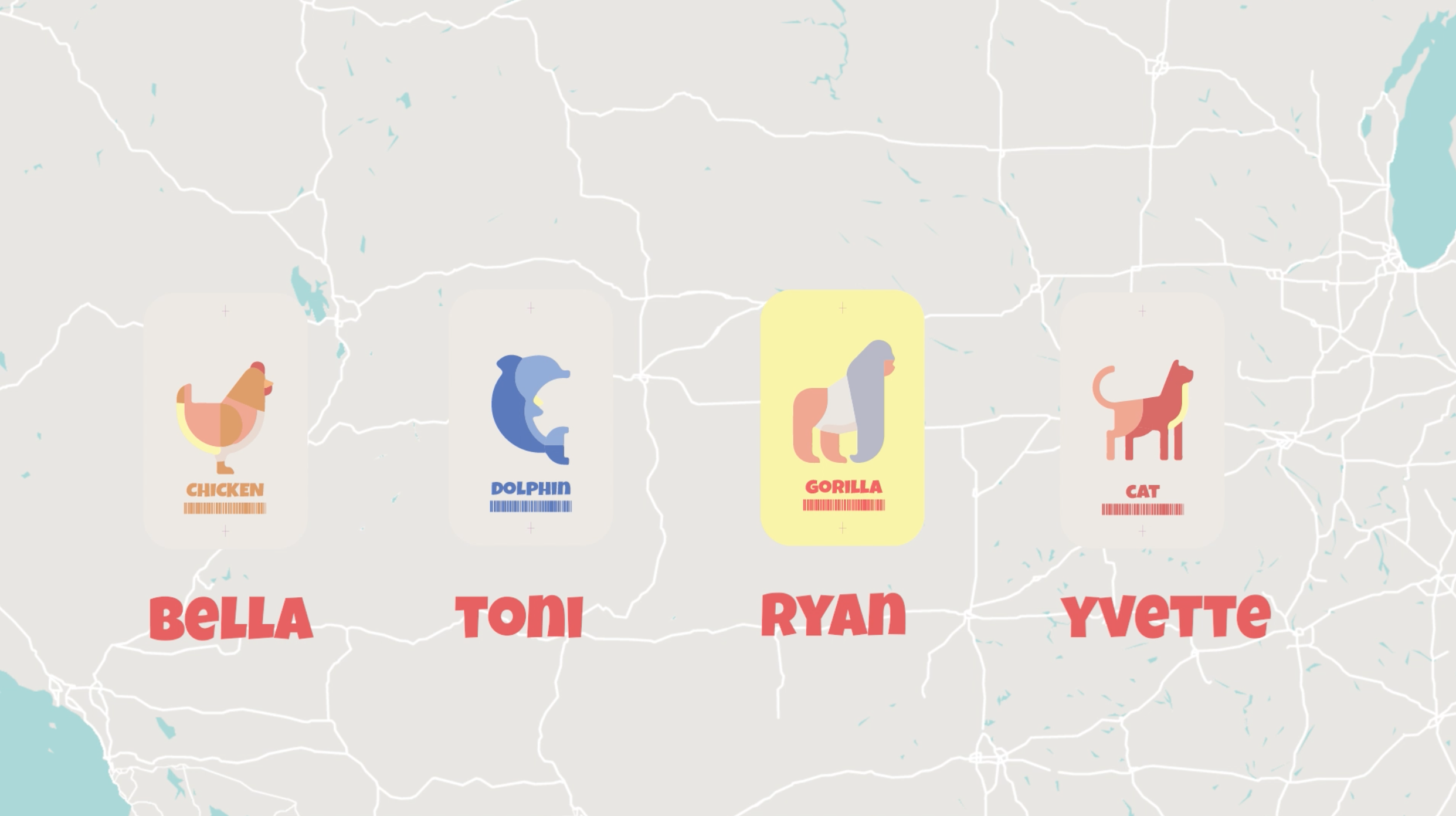
To begin with, the trip needs to decide on the locations, which must include a start point and an ending point.


A group of four, Bella, Toni, Ryan and Yvette, is thinking about a road trip, from San Francisco to Chicago for around a week.


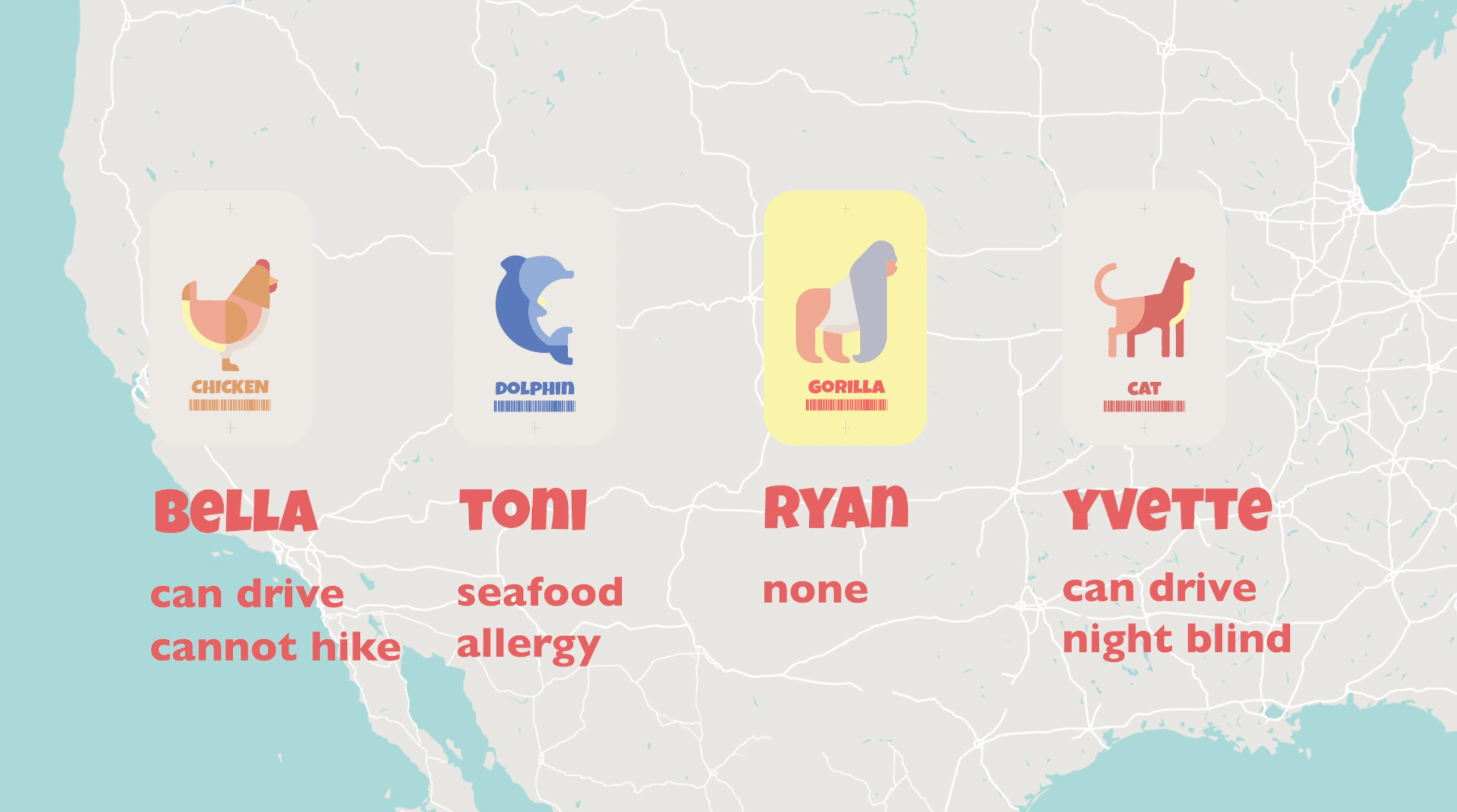
The group will scan their animal cards in with coded information that include the skills that may come handy for a road trip and restrictions that they might have.

Each animal character are free to choose what stops they would like to make by scan the location token, which includes categories like food, gas, national park, museum, stay and grocery.
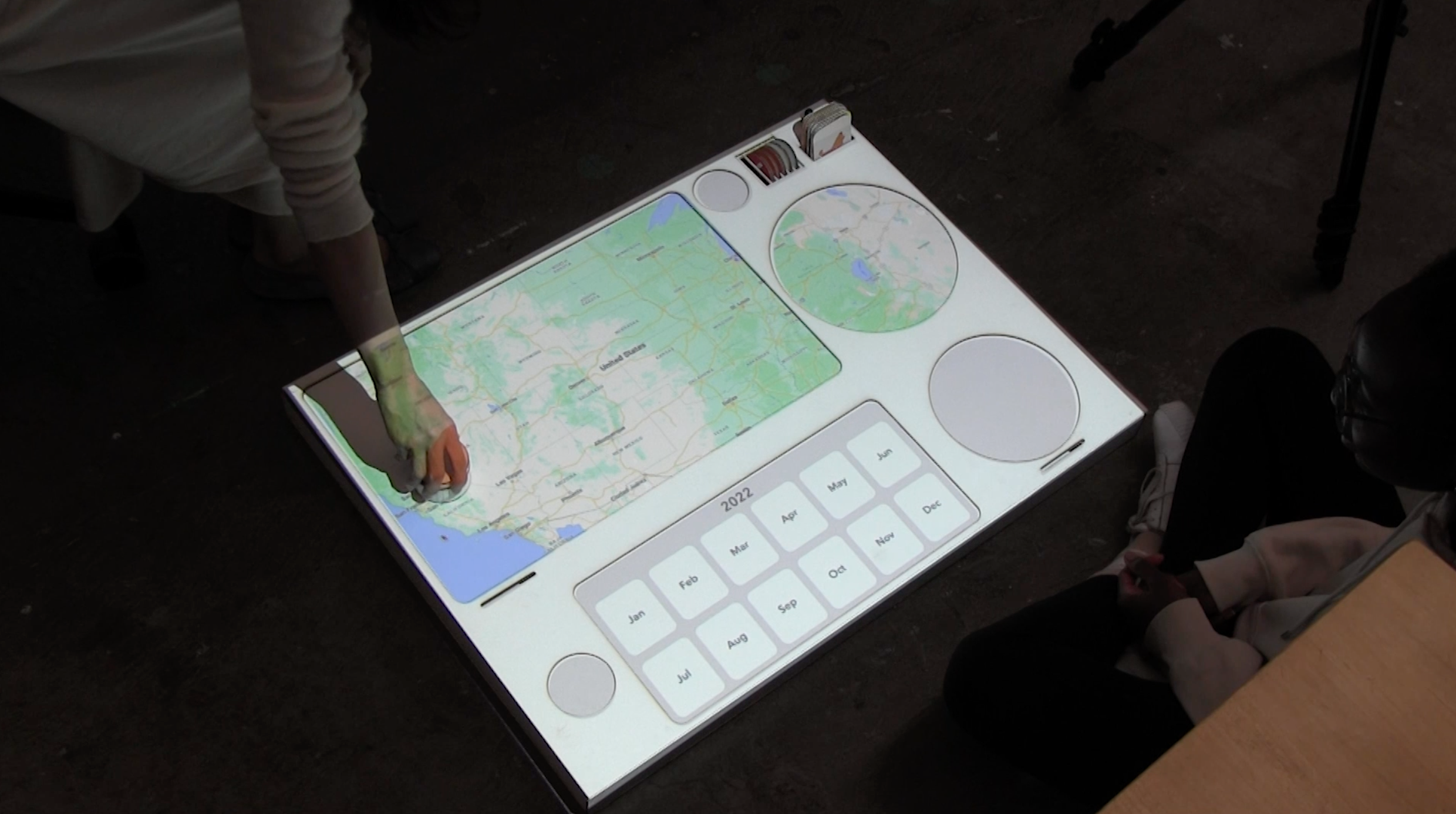
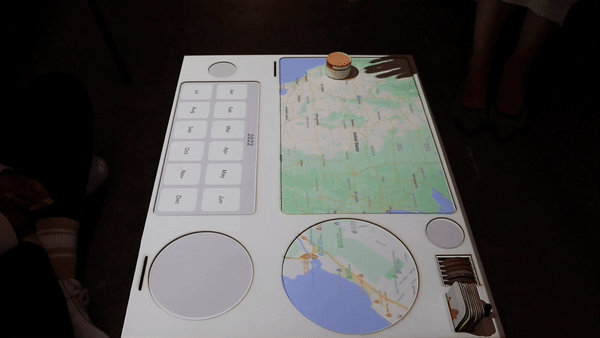
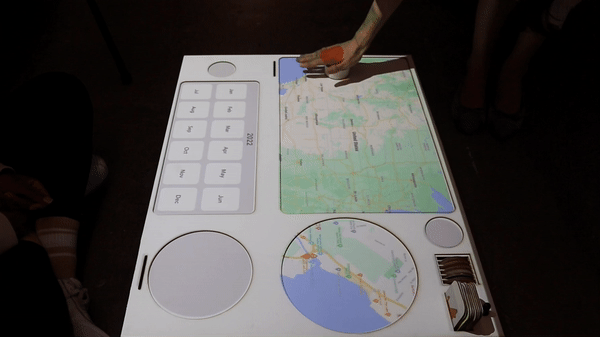
By rotating the location token, a map could be zoomed in for details. Continue the rotation enables the selection of a specific stop under the category, for example, food. Tapping the token to confirm the selection and cover it with hand for three seconds to deselect.

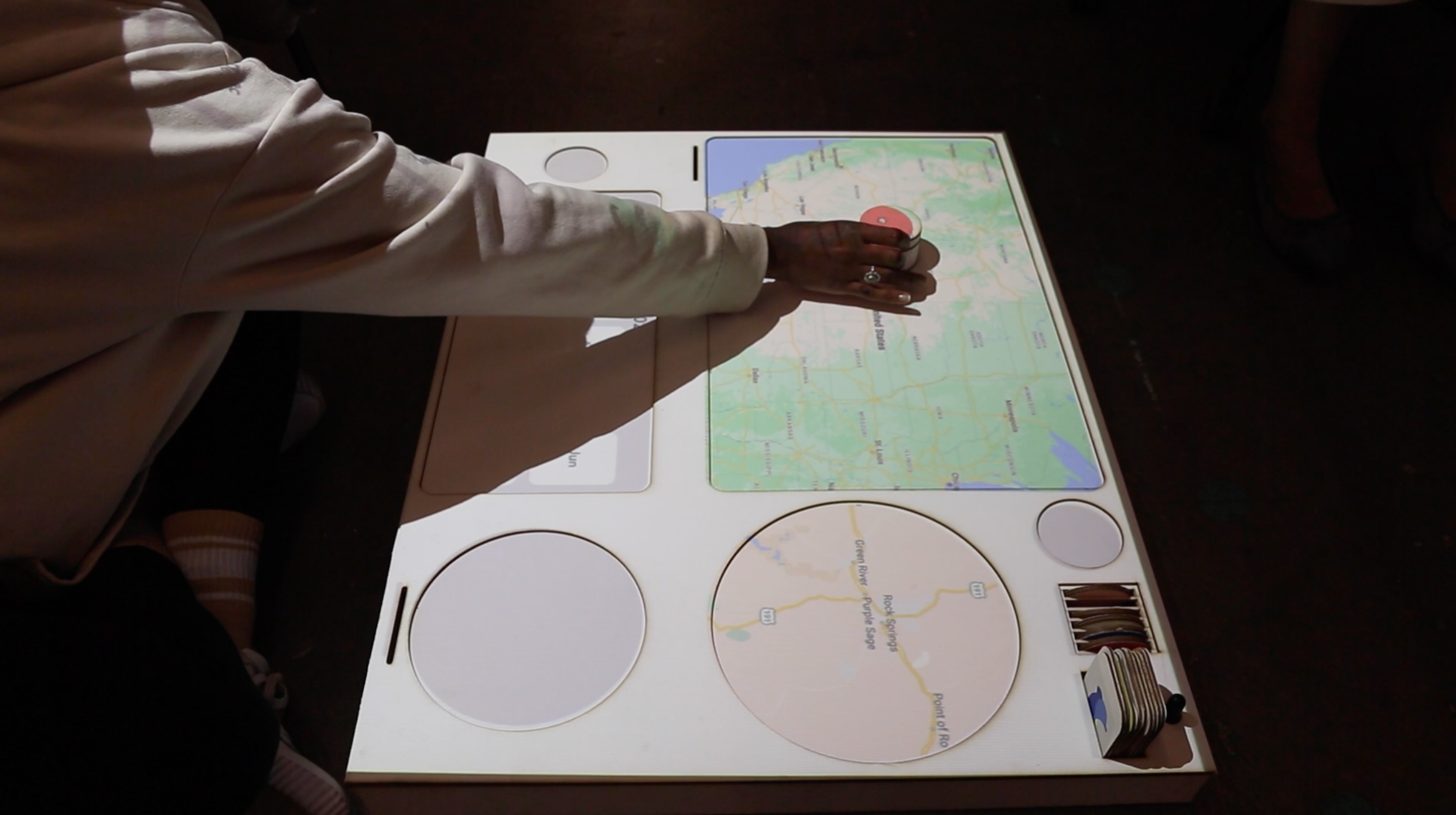
After the locations are settled, a schedule is needed for a smooth driving experience. By taping to the exact start date and duration, a timesheet is created.
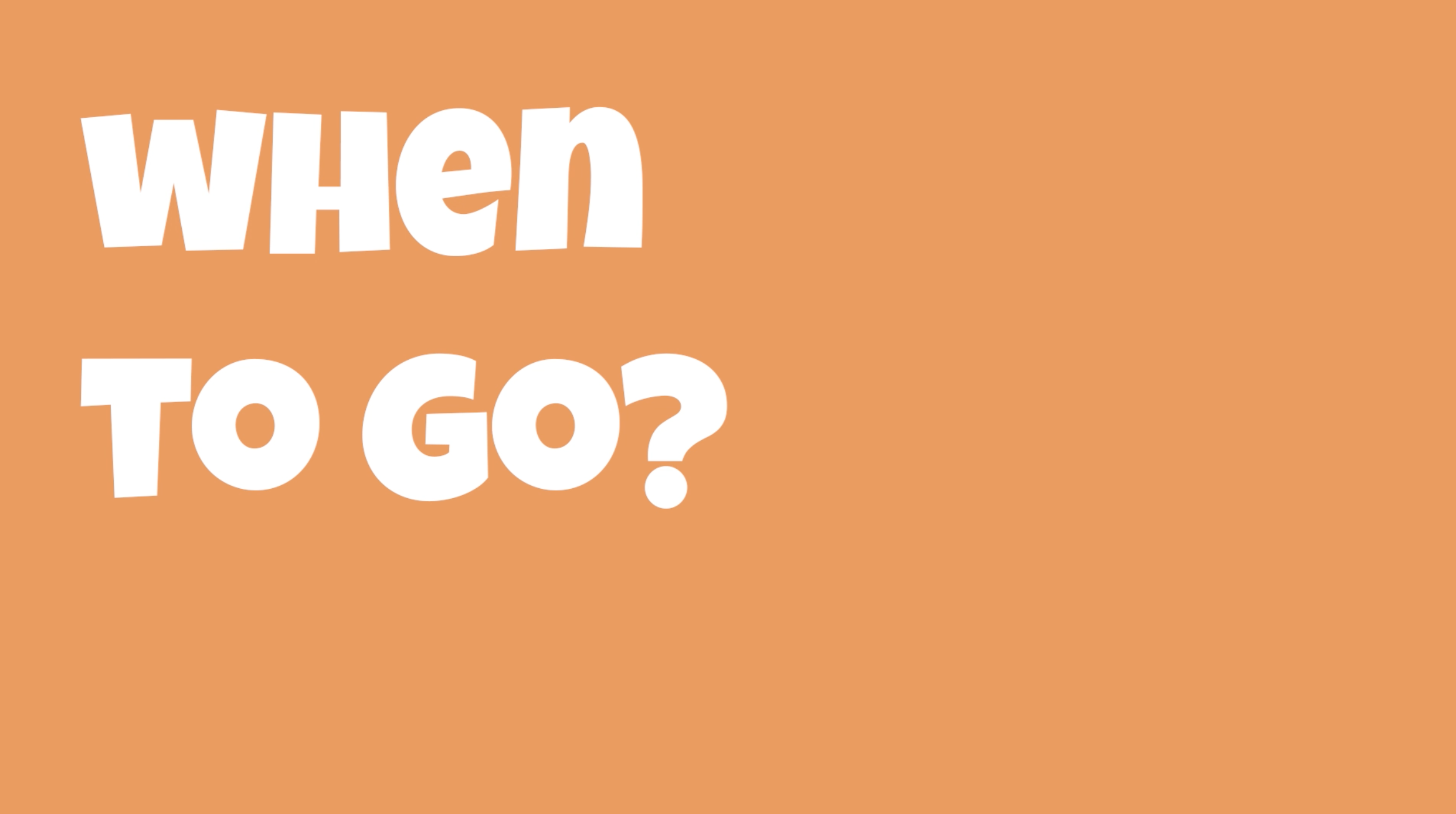


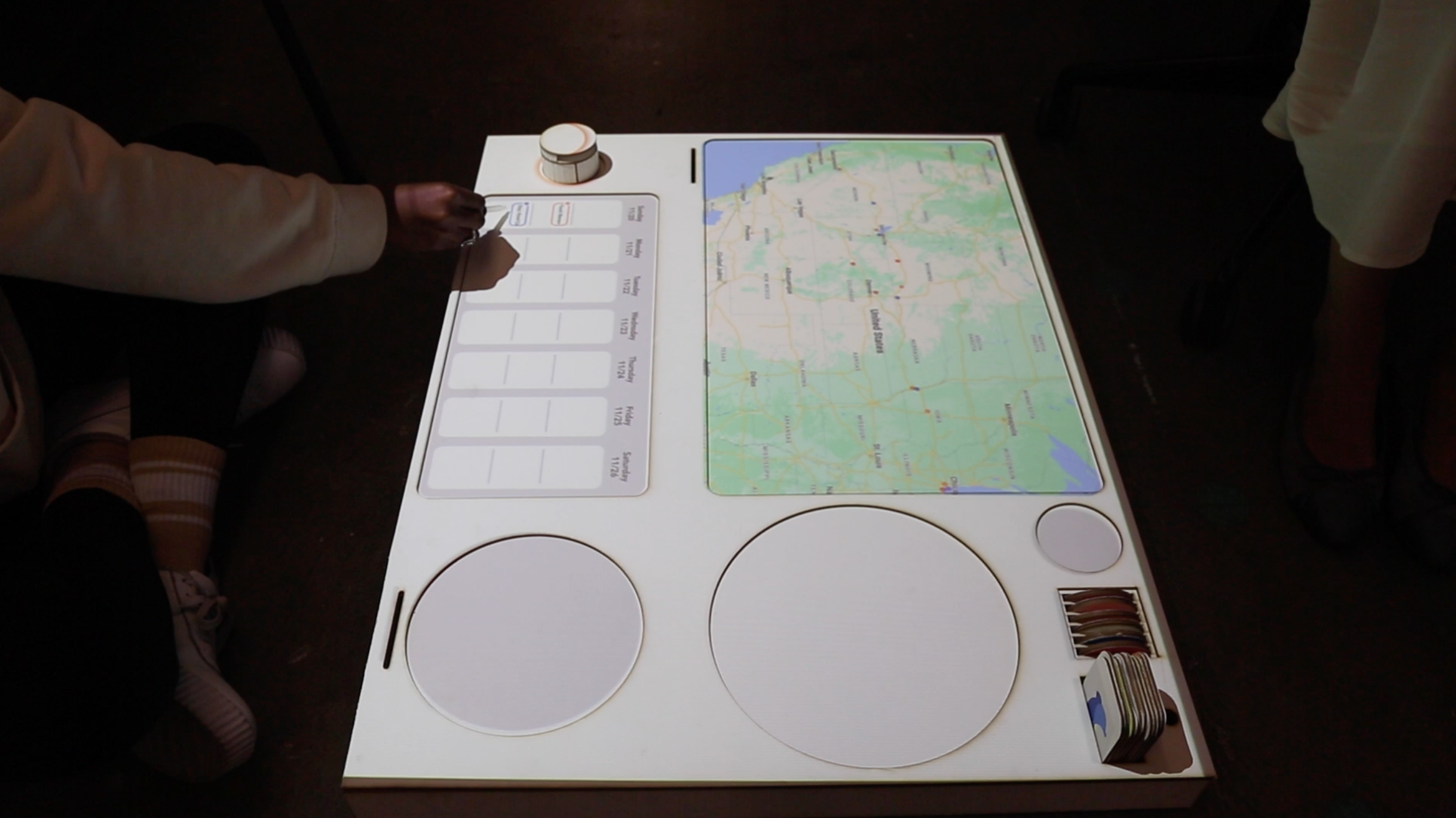
Using the eyedropper to pick up the location from the map to the timesheet, a trip could be quickly planned and pre-arranged.
Now, as it is usually the case for a trip planning, there will be time that two locations are conflicting the schedule and a balance of the decisions need to be weighted.


For example, if Yvette wishes to arrives at the stay of the day early while Ryan wishes to visit Rock Springs for a stop during the day, they need to decide what’s for the best.

To avoid arugments, a lottery system is introduced and will help to make the decisions quickly but also in a fair manner. The animals will scane their card in the lottery and based on their skills and restrictions, a balance of their weight in made by the system.


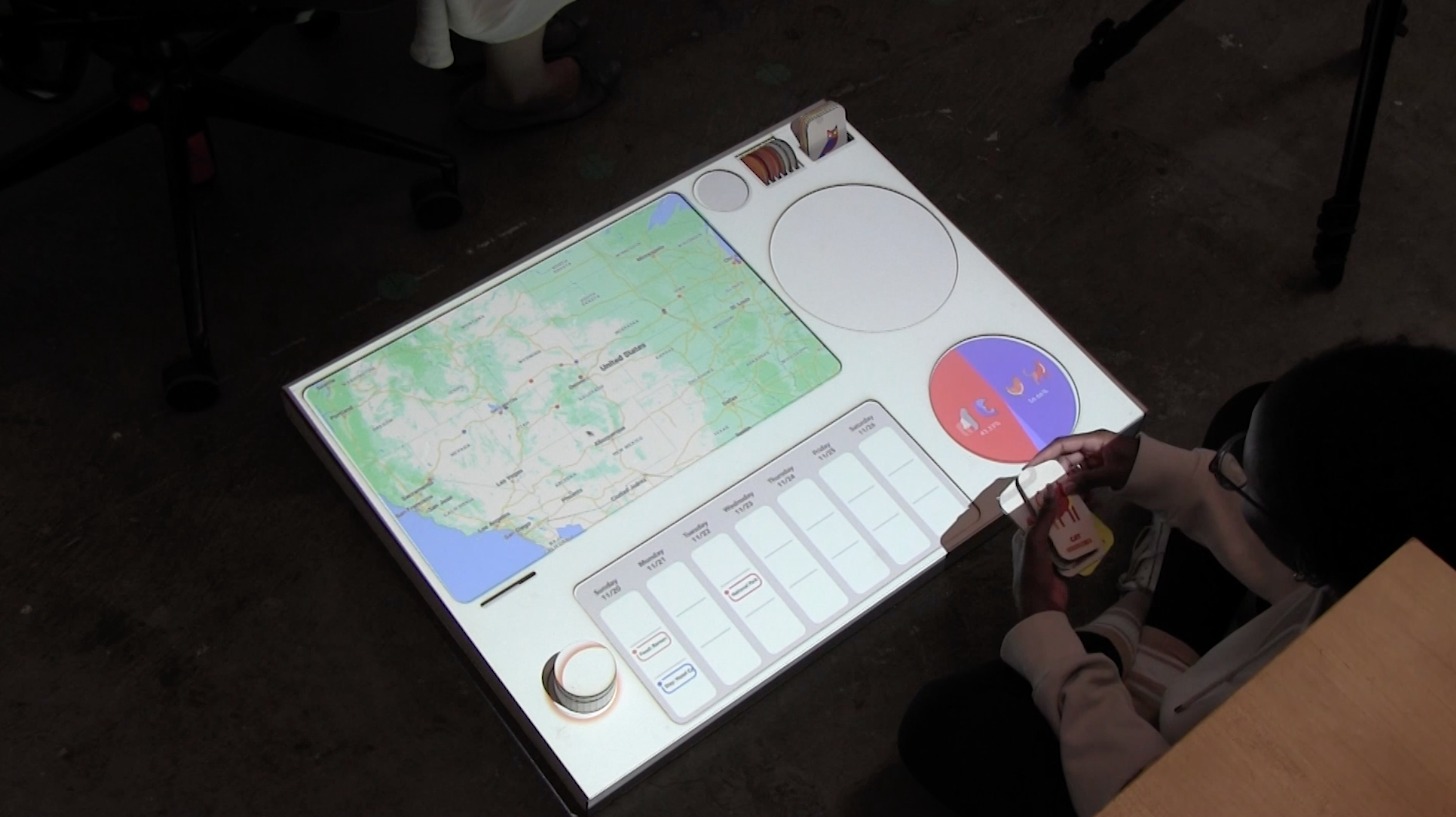 Each animals that voted for a certain location will scan their card after picking up the location to the lottery. A red and blue division will indicate which location that the animals are for. Toni and Ryan scanned their card for visiting the Rock Springs while Yvette and Bella chose to call it a day by arriving at the stay of their night.
Each animals that voted for a certain location will scan their card after picking up the location to the lottery. A red and blue division will indicate which location that the animals are for. Toni and Ryan scanned their card for visiting the Rock Springs while Yvette and Bella chose to call it a day by arriving at the stay of their night. 

By letting it to the turntable, it is decided jointly by luck but also their proportional weight in decision making. A decision is then made. Picking the location to the timesheet after the lottery has made its choice.

Finally, a timesheet of the stops and stays of the trip is generated and it’s time for the road trip.
